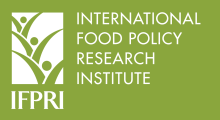Resource information
Zambia is one of the poorest countries in Sub-Saharan Africa. Almost three-quarters of the population were considered poor at the start of the 1990s, with a vast majority of these people concentrated in rural and remote areas. This extreme poverty arose in spite of Zambia's seemingly promising prospects following independence. To better understand the failure of growth and poverty-reduction this paper first considers the relationship between the structure of growth and Zambia's evolving political economy. A strong urban-bias has shaped the country's growth path leading to an economy both artificially and unsustainably distorted in favor of manufacturing and mining at the expense of rural areas. For agriculture it was the maize-bias of public policies that undermined export and growth potential within this sector....Sustained investment and economic growth during recent years suggest a possible change of fortune for Zambia. In light of this renewed growth, the paper uses a dynamic and spatially-disaggregated economy-wide model linked to a household survey to examine the potential for future poverty-reduction....Although agricultural growth is essential for substantial poverty-reduction, the country's large poor urban population necessitates growth in non-agriculture. The findings suggest that returning to a copper-led growth path is not pro-poor and that non-mining urban growth, although undermined by foreign exchange shortages and inadequate private investment, is likely to be preferable for reducing poverty." -- Authors' Abstract


